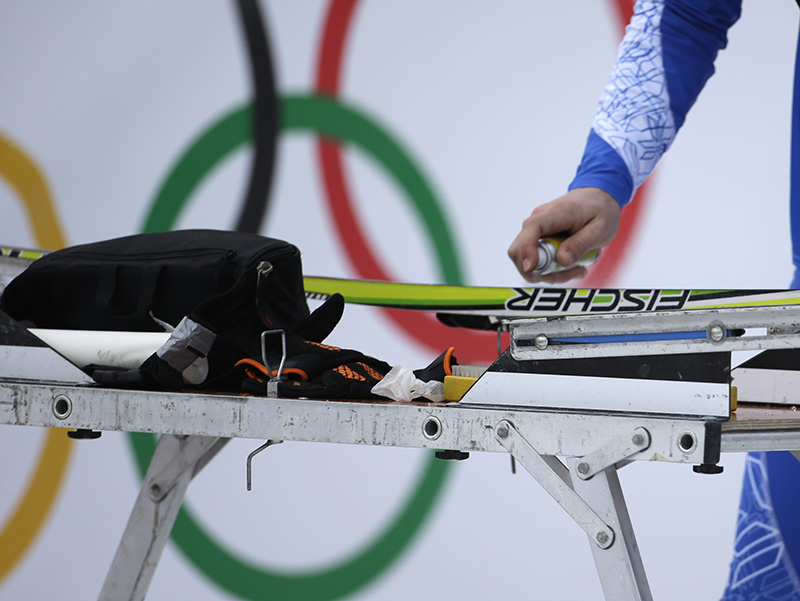KRASNAYA POLYANA, Russia (AP) — Hours before the start of any cross-country skiing or biathlon race at the Sochi Olympics, the wax cabins next to the courses are already a hive of activity. It’s here, inside the barrack-like structures, that gold medals can be won or lost before the skiers even get to the starting line.
Finding the right wax setup is a difficult science, and the top teams have more than a dozen technicians preparing up to 30 different pairs of skis before each race. Different snow temperatures require different setups to get the right amount of glide and grip, and getting it wrong can ruin even a strong favorite’s chances. With about 500 different wax products to choose from, the combinations are endless, and getting it right requires years of experience.
“It can make or break a medal performance,” American cross-country skier Andrew Newell says. “That’s on the shoulders of a wax tech.”
Teams have their staff test the skis on the course, and each skier could get a unique setup depending on his preferences. The best setups are guarded like state secrets, with technicians speaking in code to each other over the radio so other teams can’t copy them.
Depending on the conditions, the technicians will also grind the skis in different ways depending on whether grip or glide is a priority. Running a finger along a waxed ski can feel a bit like a sticky lollypop with grooves.
“It basically comes down to three things,” Newell said. “The flex of the ski, the grind of the ski, the kind of structure that’s pressed into the bottom of it, and then the wax.”
Send questions/comments to the editors.



Success. Please wait for the page to reload. If the page does not reload within 5 seconds, please refresh the page.
Enter your email and password to access comments.
Hi, to comment on stories you must . This profile is in addition to your subscription and website login.
Already have a commenting profile? .
Invalid username/password.
Please check your email to confirm and complete your registration.
Only subscribers are eligible to post comments. Please subscribe or login first for digital access. Here’s why.
Use the form below to reset your password. When you've submitted your account email, we will send an email with a reset code.